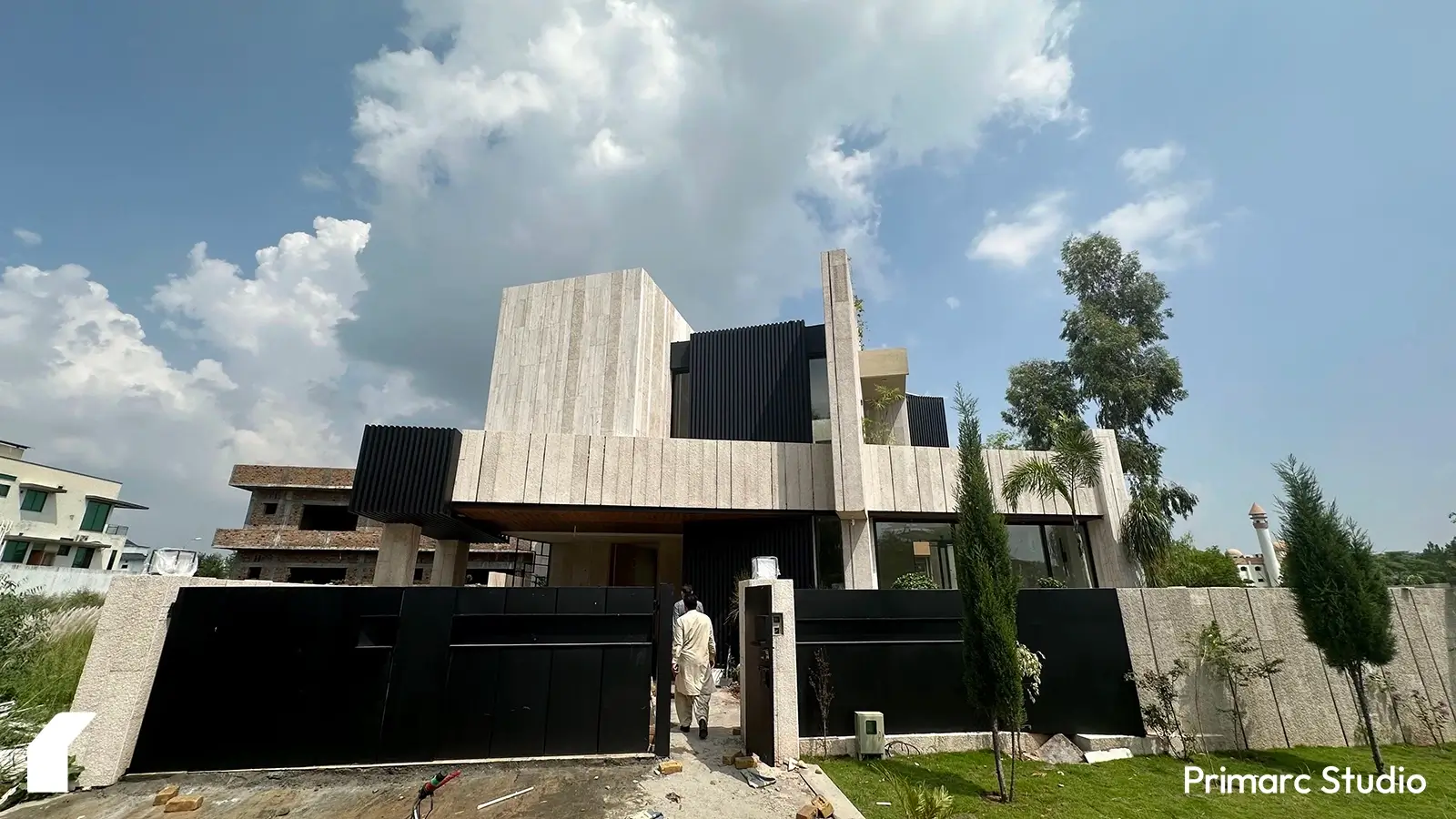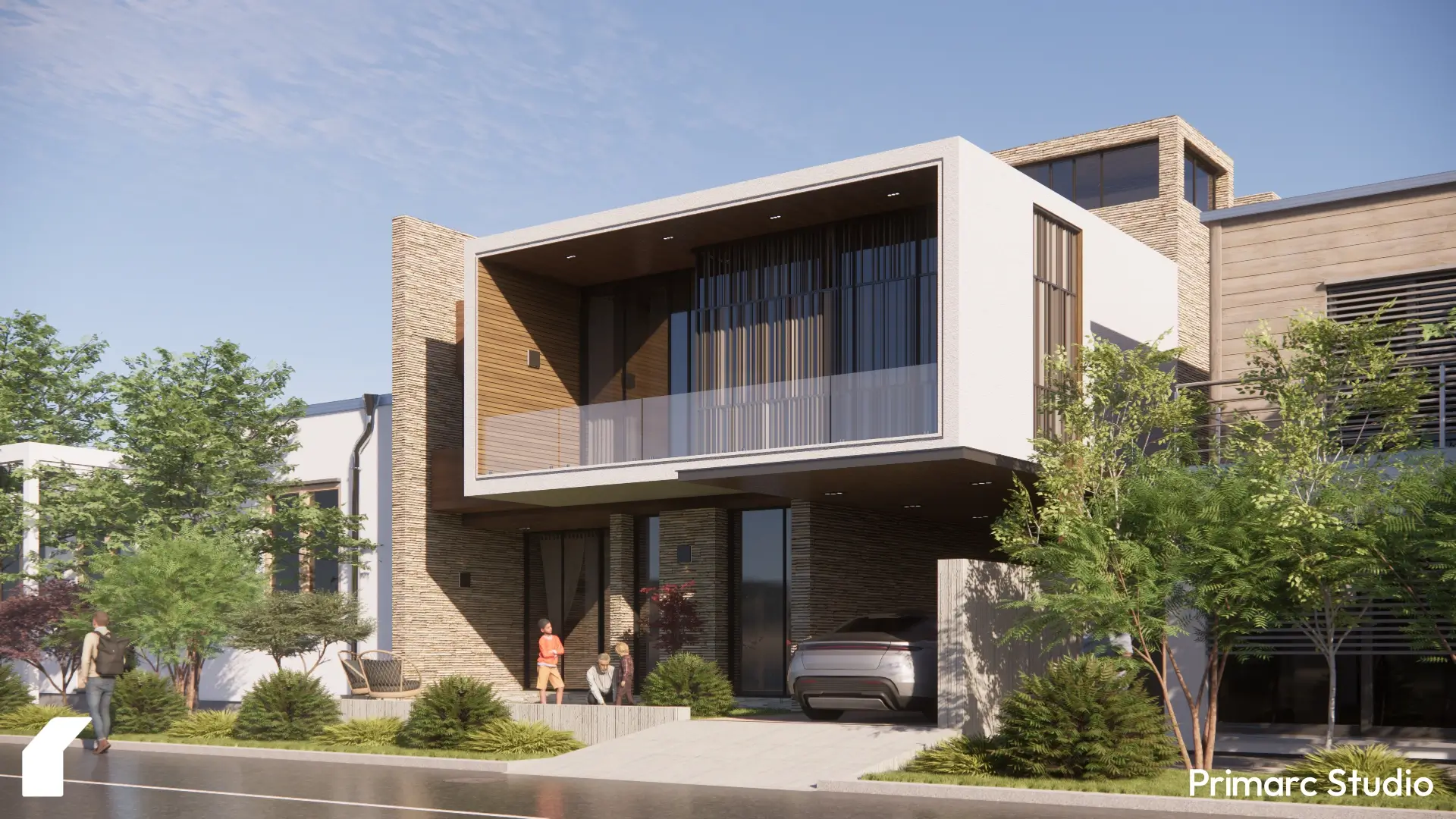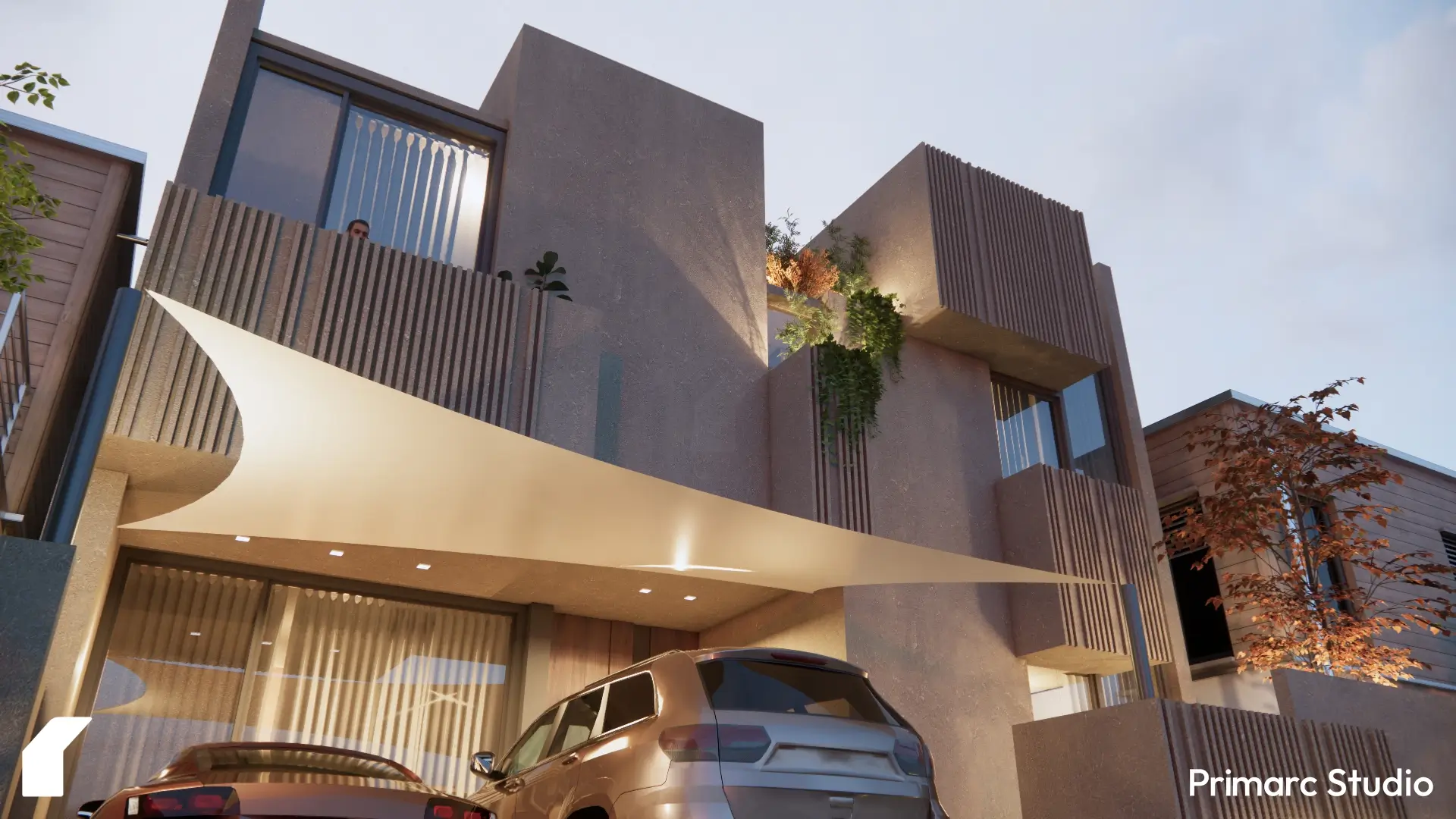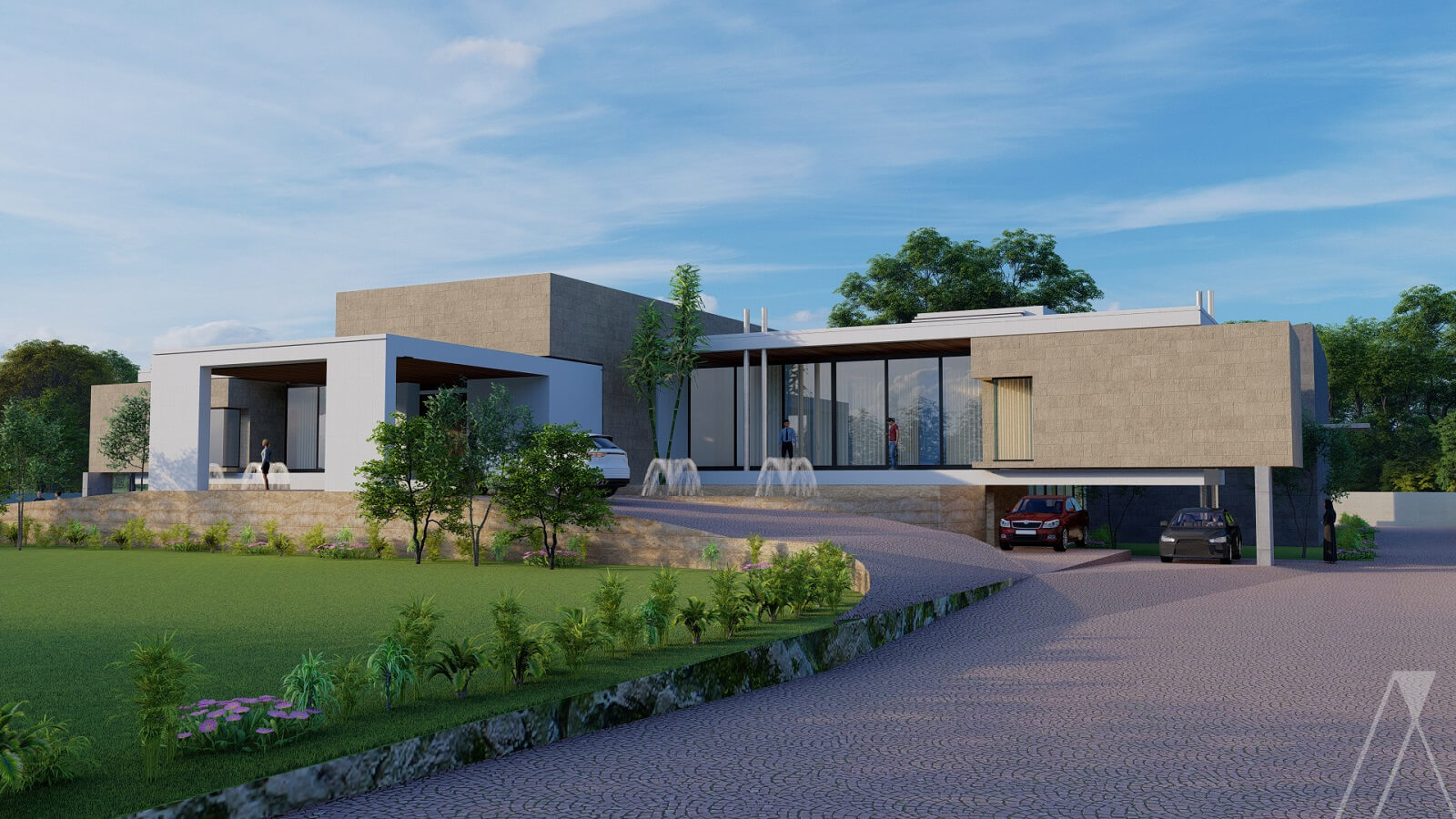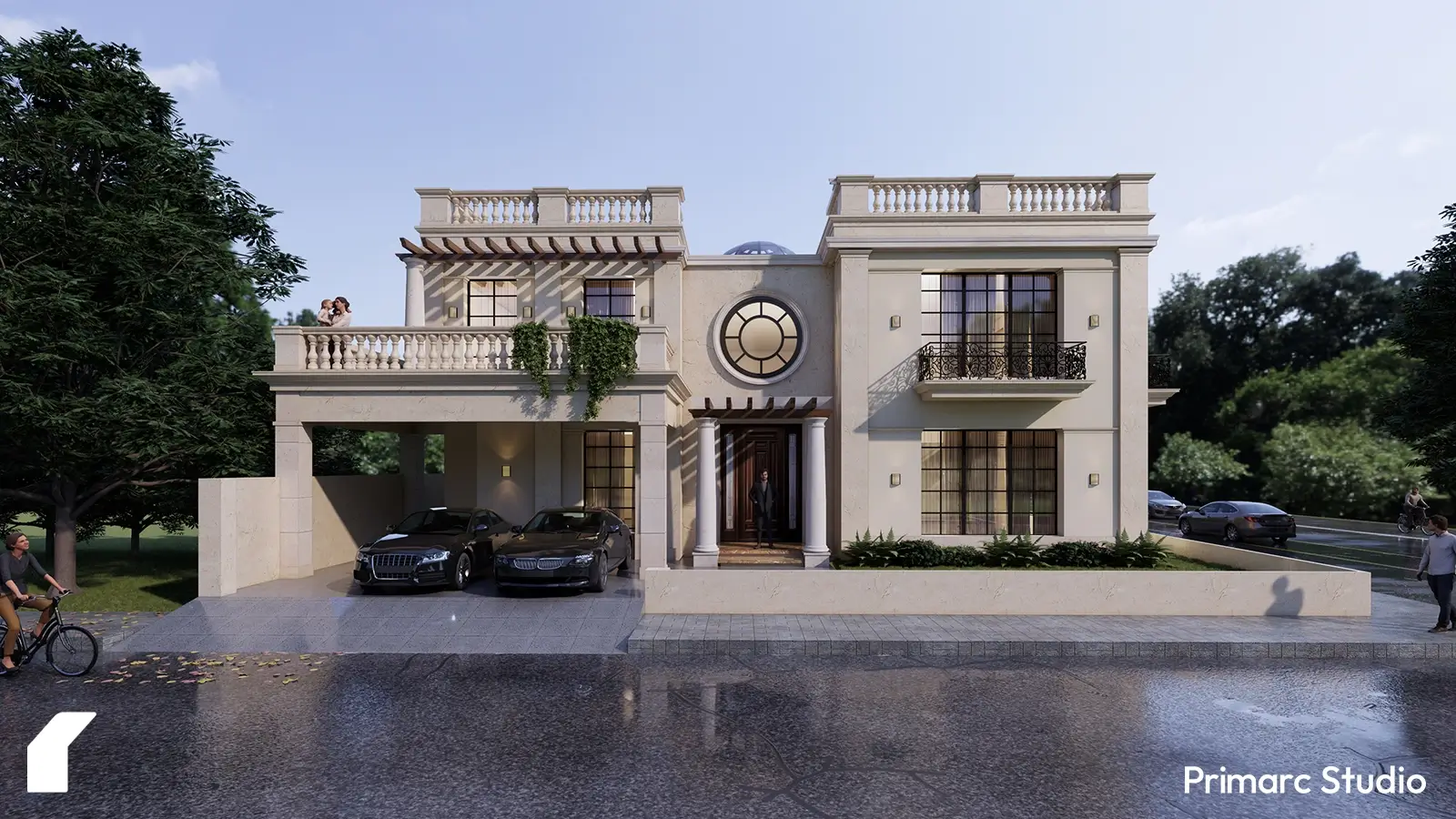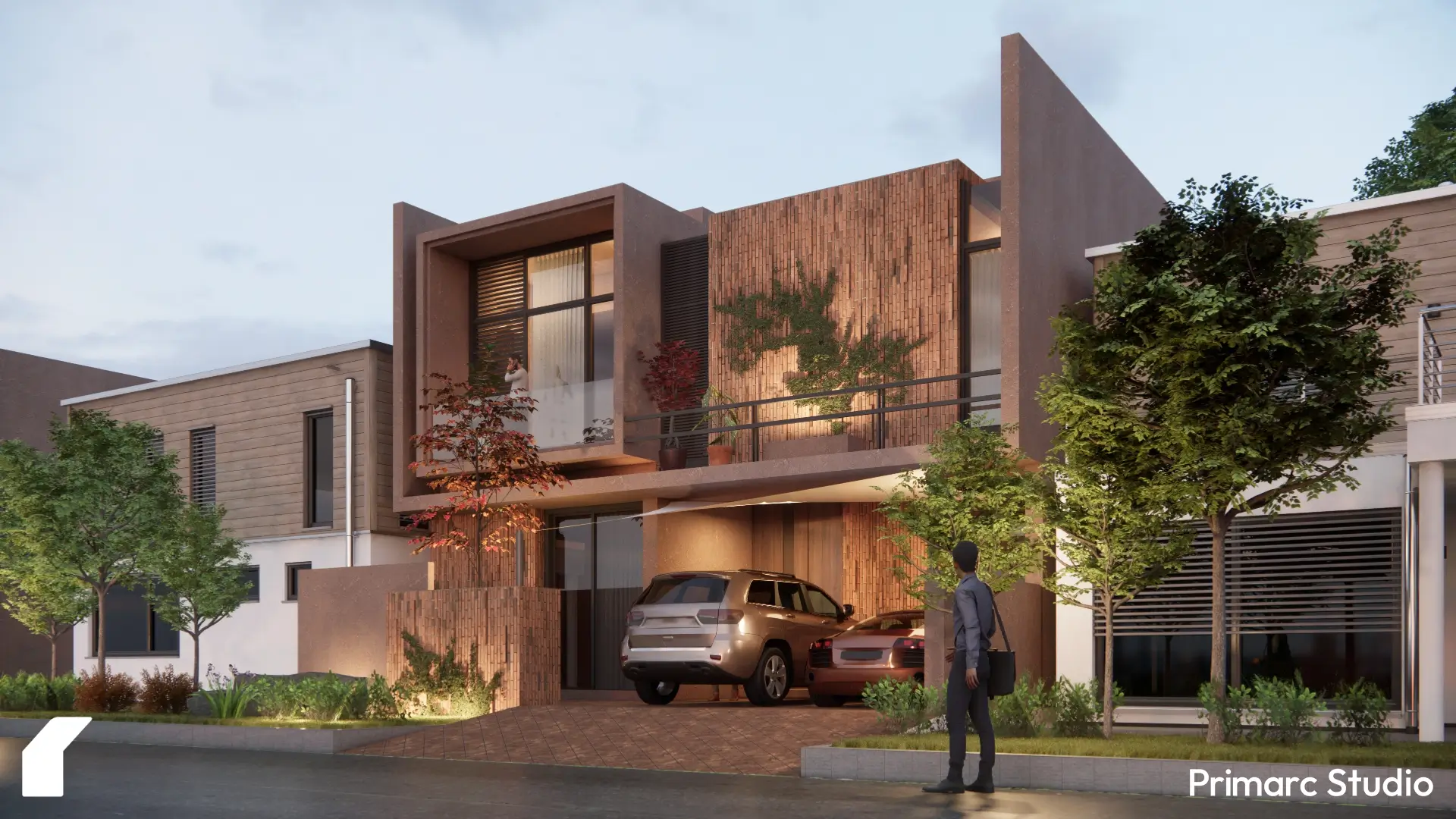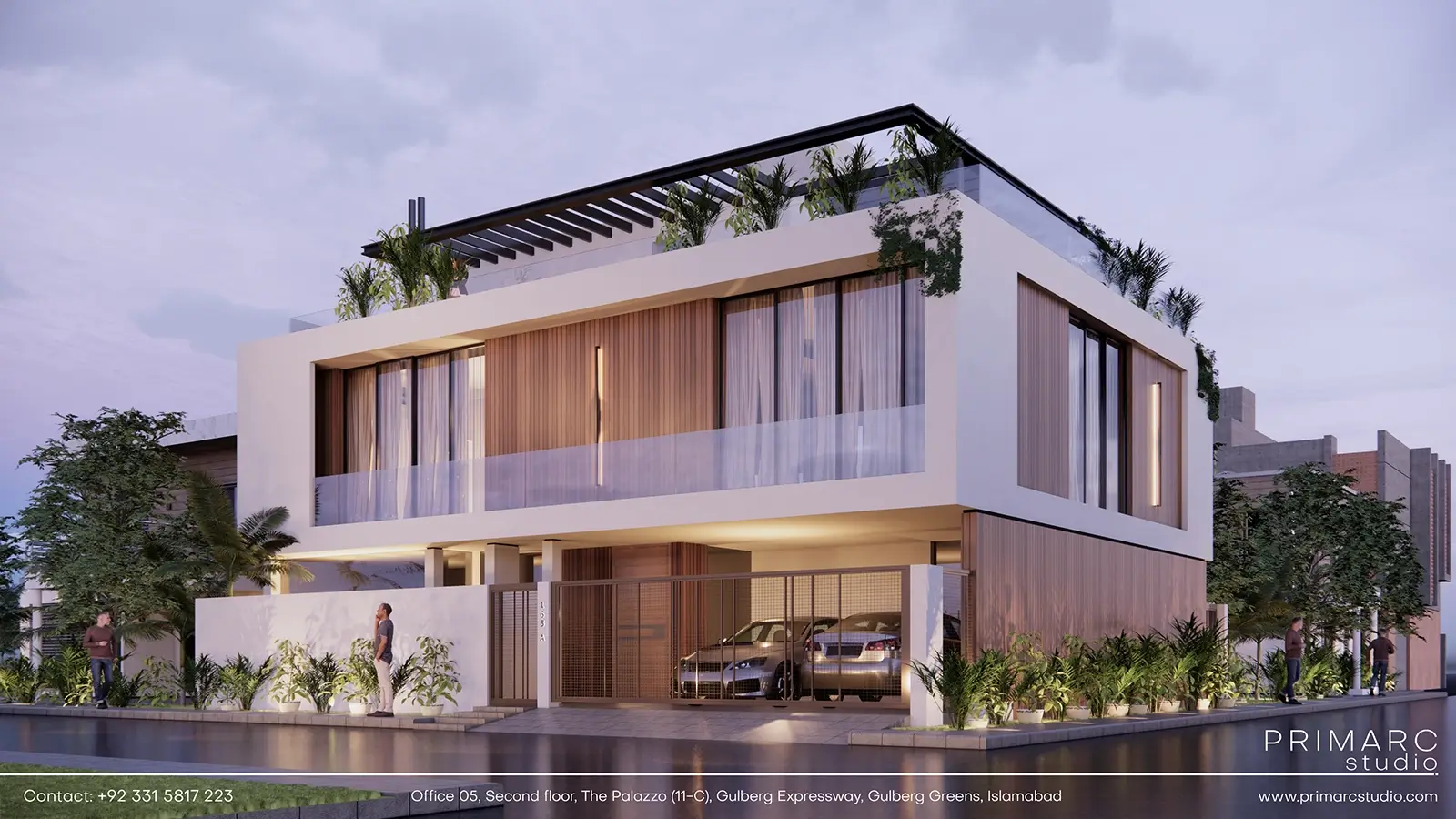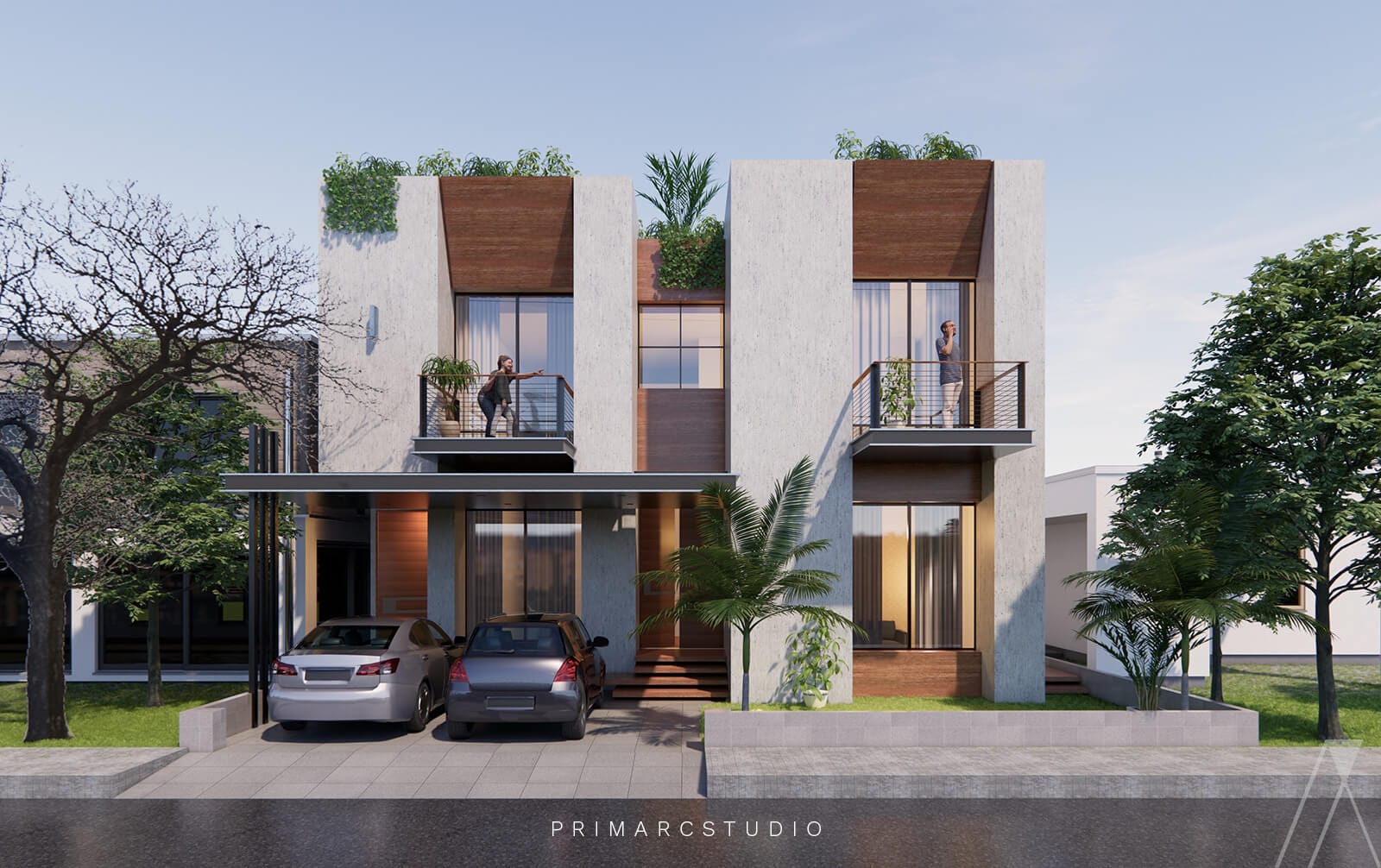Essential Elements of Contemporary House Design
Contemporary home design in architecture moves away from the strict rules of traditional styles. It focuses on the smoothness of modern architecture. These contemporary home designs are simple but innovative, as this style believe in flexibility of style to avail the desired function.
This style isn’t just about temporary trends; it focuses on timeless elegance and smart use of space, following a less-is-more approach. They fit well with their surroundings and use natural light to make bright and open spaces. This design choice values how things work well while looking good too. The result is homes that are pleasant to see and great to live in.
While we say this much on paper, when we start talking about modern house design, we also use some of the same elements, so where is the difference?
In this blog we will explore the key features, and places where in contemporary house design, where one elements properties are pushed to their extremes.
Defining Contemporary House Design
Contemporary house design has clean lines and focuses on natural light. It uses sustainable materials, setting it apart from traditional styles that follow strict rules. It moves away from old styles and embraces changes over time. Contemporary architecture is flexible and always changing.
Contemporary house design style blends modern looks with today’s needs. Functionality and beauty work together in these homes. Modern house interior design plans favor open spaces, geometric shapes, and a simple decoration style.
The Evolution of Contemporary Architecture in the US
The roots of modern architecture started in the early 1900s. This was when modernism appeared. This movement aimed to move away from the fancy and traditional styles that were common at that time. It focused on removing extra decorations and welcoming simplicity and usefulness.
Modernism created the base for what we now know as contemporary design. It highlights clean lines and geometric shapes. Also, it wants to bring the built environment closer to nature. However, modernism follows a specific time and rules. On the other hand, contemporary architecture is more flexible and changes over time.
It takes parts from many styles. These include modernism, minimalism, and even traditional architecture. It blends these styles well to make homes that are timeless and show current trends. From the famous Case Study Houses in California to the sleek skyscrapers in New York City, contemporary design made a big impact on American architecture. Its ability to include new ideas and adapt to change helps keep it important for many years ahead.
Evolution and Adaption of Contemporary Design in Pakistan
Contemporary architecture in Pakistan mixes global trends with local traditions. Many homeowners like contemporary design because it focuses on functionality, open spaces, and natural light. These features fit well with the Pakistani climate and lifestyle.
You can see cultural changes in the choice of local materials, such as brick and wood, using modern construction methods. Courtyards, which are common in traditional Pakistani homes, are now being updated in new designs. This creates a smooth link between indoor and outdoor living areas.
The rise of contemporary architecture shows a move towards sustainable and climate-friendly design. It also shows how tastes are changing for a new generation. They want to mix modern looks with their cultural identity in their homes.
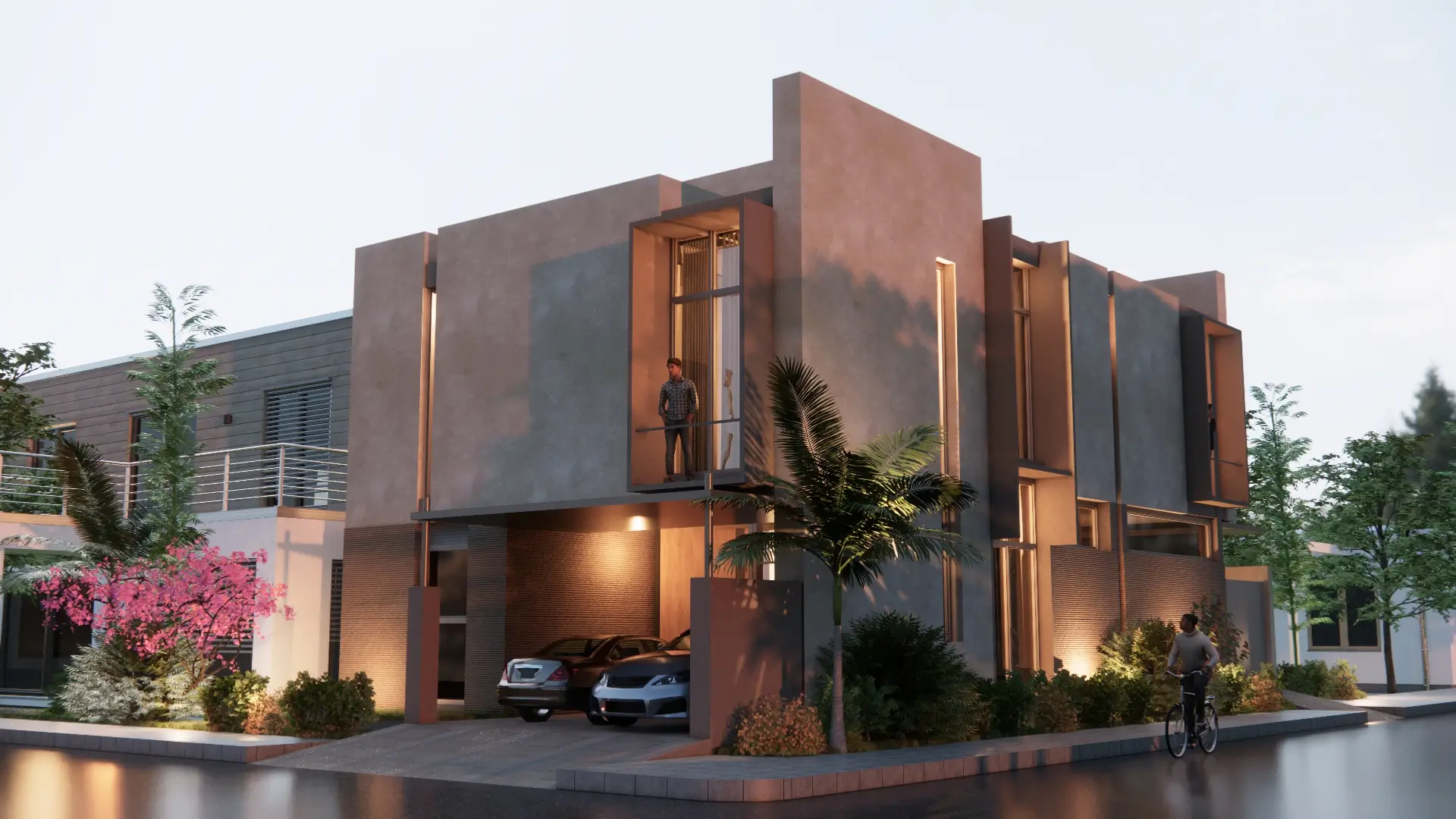
Key Characteristics That Define a Contemporary Home
Contemporary homes have easy-to-recognize features. Many of these features focus on being sustainable and blending well with nature. Here are some important qualities of this design style:
Open Floor Plan in Contemporary Houses: A main feature of contemporary design is the open floor plan. This makes spaces feel larger and promotes interaction in living areas. Minimalist furniture and simple decoration further enhance this open feel.
Large Windows: Natural light is crucial in interior design of contemporary homes. Large windows, often from floor to ceiling, let in a lot of sunlight. This brightens the rooms and makes a smooth connection between the inside and outside.
Natural Materials: Contemporary design prefers natural materials for both building and decorating. You’ll see things like exposed brick, wooden beams, and natural textures in textiles and furniture.
Innovative Design Elements of Contemporary Houses
Contemporary homes do more than just follow trends. They accept new ideas and include the latest technology and design methods. A big part of their style is the use of sleek lines. This gives a smooth and elegant look to both the inside and outside.
Modern design focuses on function and simple style, and it greatly influences contemporary homes. Nonetheless, contemporary architecture does even more. It uses eco-friendly materials and energy-saving systems. It also includes smart home technologies. This results in living spaces that are nice to look at and good for the environment.
Key Features of Contemporary House Designs
1. Asymmetrical Facades and Free-form Designs
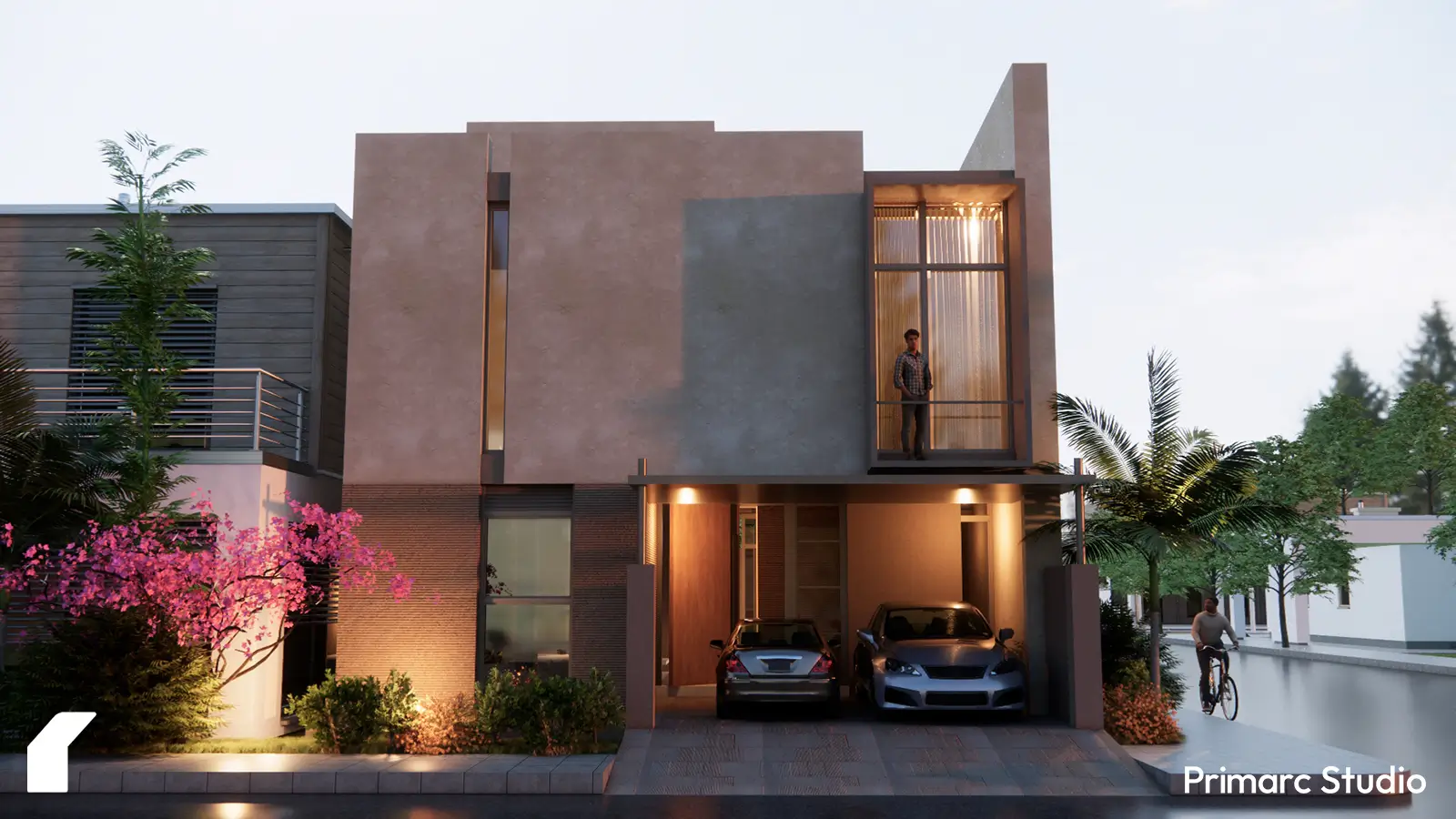
Contemporary houses often feature asymmetrical facades, which create a dynamic and visually appealing exterior. These designs incorporate irregularly placed windows and doors to maximize natural light, ventilation, and scenic views. The use of diagonal lines, louvers, and cantilevered elements adds to the architectural creativity and adaptability to varied topographies.
2. Blend of Different Styles
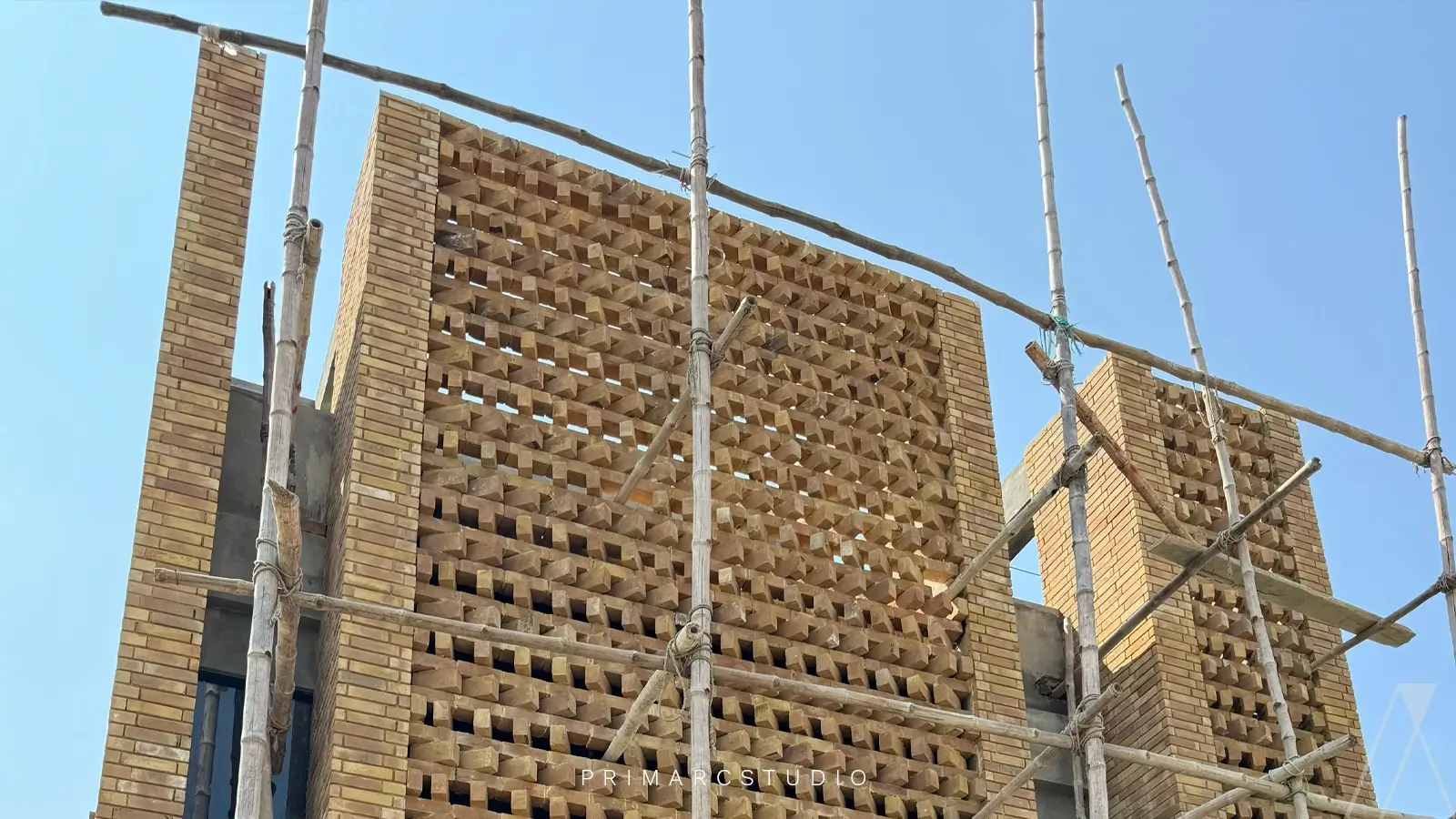
One of the hallmarks of contemporary architecture is the seamless integration of different styles. Modern and traditional elements are blended to create sophisticated environments, while industrial and rustic styles combine to offer a rugged yet refined aesthetic. This fusion allows for a personalized and cohesive living space that reflects the homeowner’s preferences and the surrounding environment.
3. Use of Modern Materials
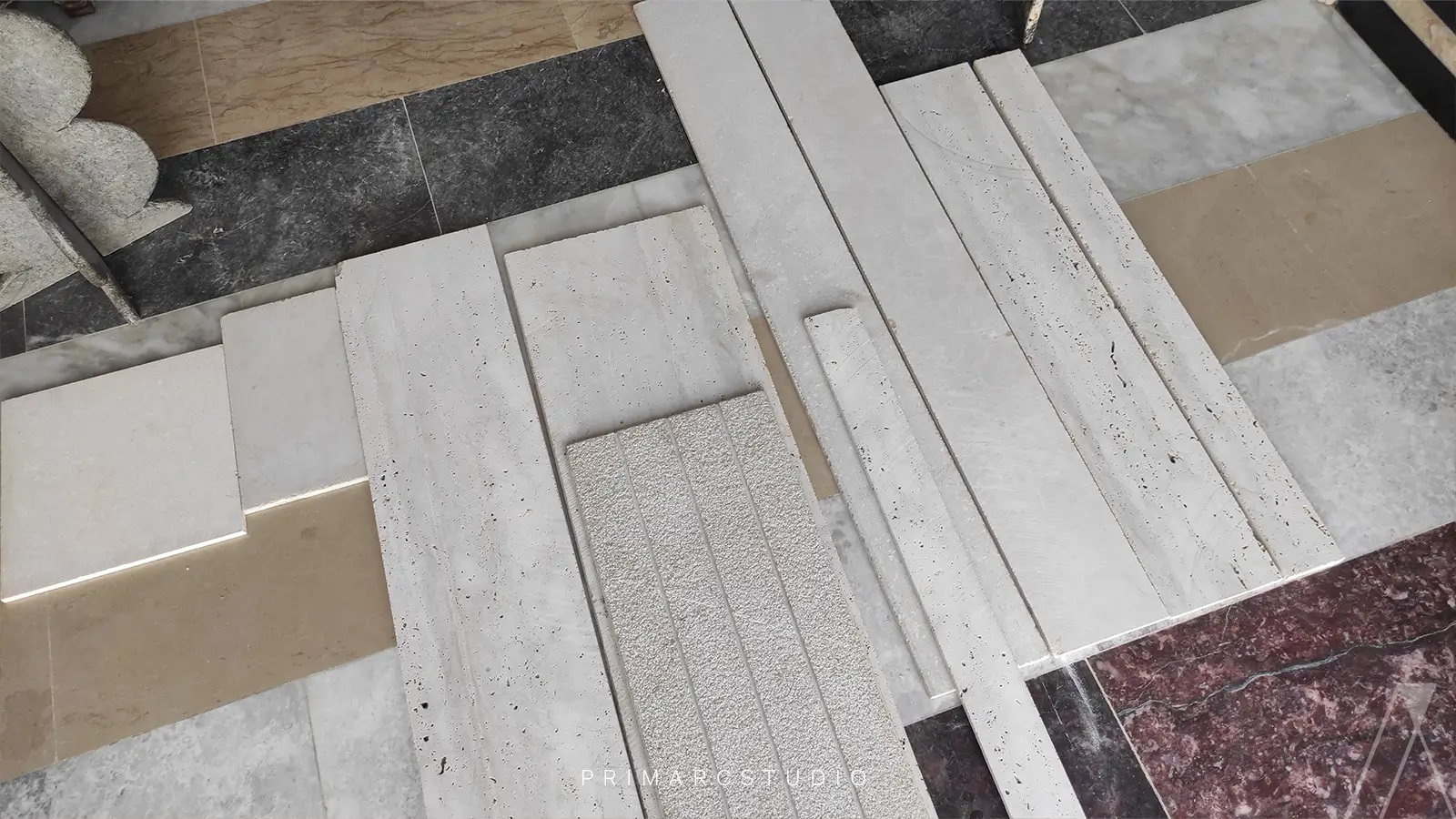
Contemporary designs prioritize the use of modern, sustainable materials such as steel, glass, concrete, and engineered wood. Steel is valued for its durability and flexibility, while glass enhances natural lighting and connectivity with the outdoors. Concrete provides structural integrity and aesthetic versatility, and wood adds warmth and natural beauty.
4. Open Floor Plans
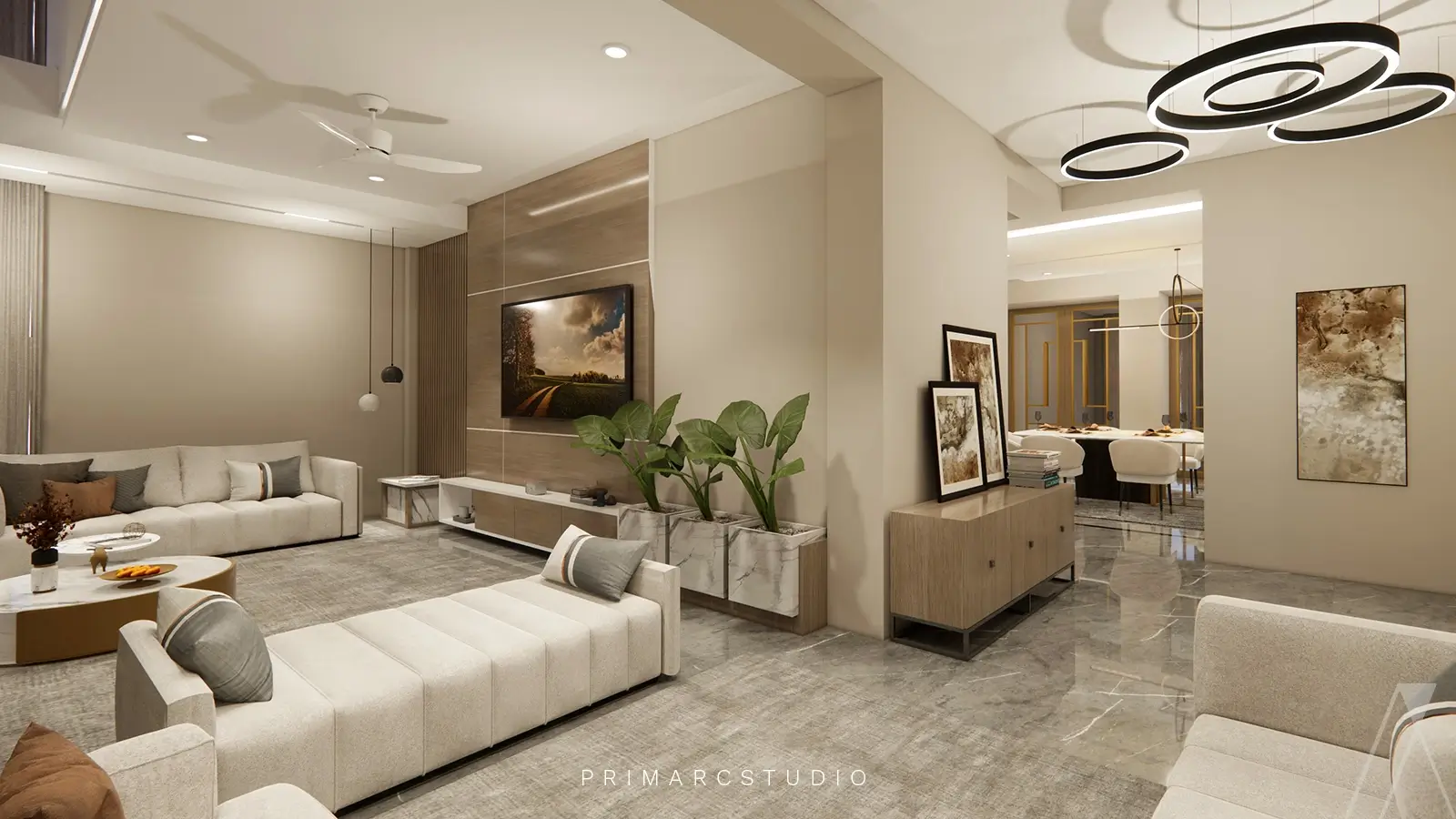
Open floor plans are essential in contemporary houses, promoting spaciousness, flexibility, and connectivity. By minimizing internal walls and partitions, these designs facilitate natural light and airflow, creating a seamless integration of indoor and outdoor spaces. This layout supports multi-functional living areas that cater to various activities and lifestyles.
5. Use of Large Windows

Large windows are a defining feature, offering panoramic views and reducing reliance on artificial lighting. These windows are often energy-efficient, with double or triple glazing and low-emissivity coatings to regulate indoor temperatures and enhance sustainability.
6. Flat and Low-Pitched Roofs
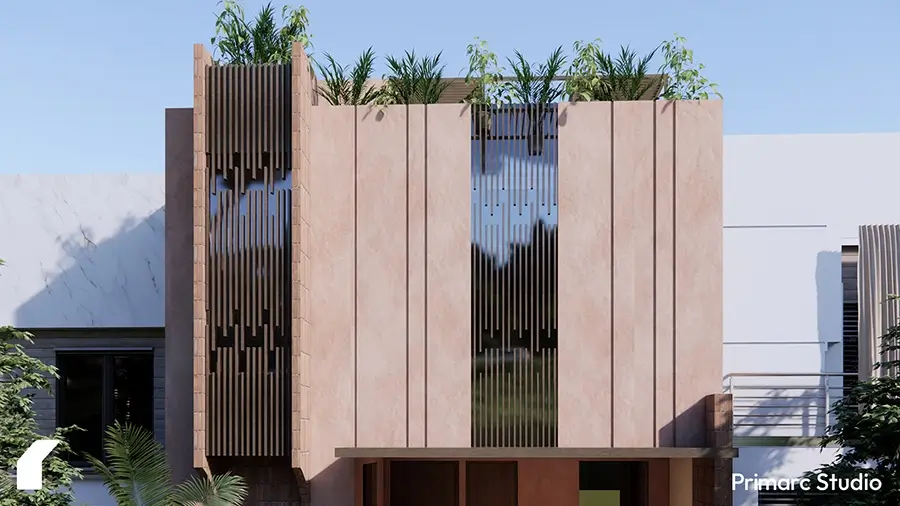
Flat and low-pitched roofs provide a sleek and minimalist aesthetic, allowing for additional functional spaces such as rooftop gardens and terraces. These roofs are cost-effective and require less maintenance compared to traditional pitched roofs, provided they are designed with proper drainage and waterproofing systems.
Additional Features and Trends
1. Smart Home Technology
Incorporating smart home technology is a growing trend in contemporary house designs. Home automation systems enhance convenience, security, and energy efficiency, offering features such as automated lighting, climate control, and security monitoring.
2. Sustainable and Eco-Friendly Design
Contemporary houses increasingly incorporate sustainable practices and eco-friendly materials. Solar panels, rainwater harvesting systems, and green roofs are common features that reduce environmental impact and promote energy efficiency.
3. Flexible and Adaptive Spaces
Modern living requires adaptable spaces that can serve multiple functions. Contemporary designs often include movable partitions, multi-purpose rooms, and convertible furniture to maximize space utilization and cater to changing needs.
4. Emphasis on Natural Elements
Bringing the outdoors inside is a key trend, with designs emphasizing natural elements such as indoor gardens, water features, and the use of natural materials. This approach fosters a connection with nature and enhances overall well-being.
Pros And Cons Of Contemporary Houses
Contemporary house design has many benefits. It features a minimalist look and lets in a lot of natural light. The floor plans are open and flexible. However, this style also has some things to think about. Comparing the good and bad sides can help homeowners decide if it fits their way of living.
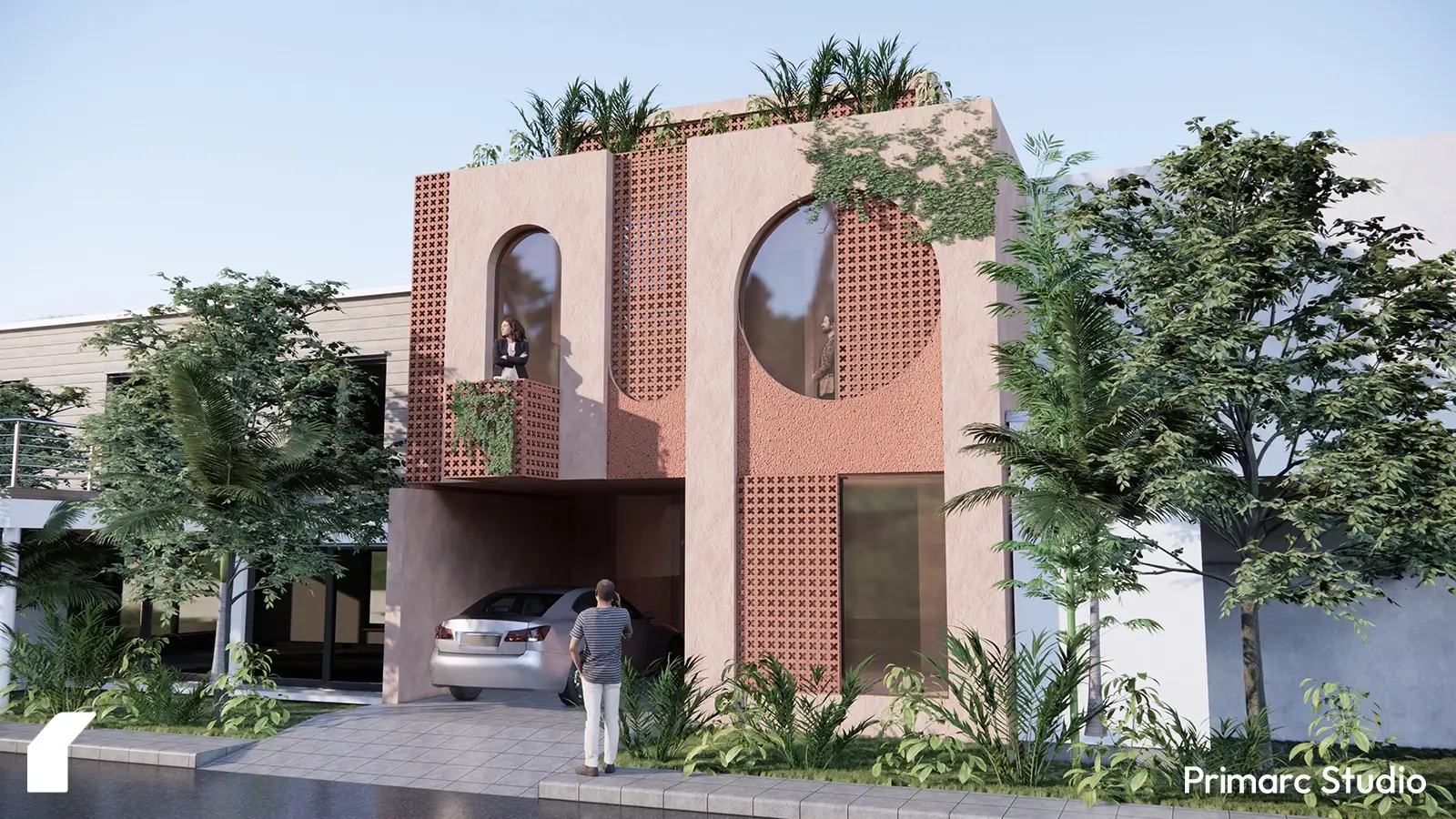
Do you like the sleek lines and practical spaces in contemporary homes? Let’s look at the pros and cons to help you make a smart choice.
Pros Of Contemporary Houses
Contemporary homes are becoming increasingly popular due to their emphasis on minimalism and functionality, creating clean and enjoyable living spaces. They feature large windows, skylights, and open floor plans that allow for an abundance of natural light, fostering a bright and open indoor atmosphere.
Additionally, many contemporary homes incorporate sustainable features, such as eco-friendly materials and energy-saving systems, which reduce environmental impact and can lower utility costs.
Cons Of Contemporary Houses
While contemporary homes offer individuality and eco-conscious designs, they come with some drawbacks, such as higher initial construction costs due to the use of quality, often sustainable materials. Maintenance can also be demanding, especially for features like large windows that require regular cleaning.
Additionally, the minimalist style may feel cold or lack warmth, although this can be mitigated by incorporating natural textures, rugs, and personal decor to create a more inviting atmosphere.
Why Are Contemporary-Style Homes Popular?
Contemporary-style homes are still popular today. They attract homeowners because of their clean lines and functional layouts. These homes adapt well to changing lifestyles. They focus on natural light and create a smooth flow between indoor and outdoor spaces. This makes them inviting for relaxation and entertaining.
Besides how they look, more people are seeking contemporary homes for their sustainable features. These homes use eco-friendly materials and energy-efficient systems. They also aim to lower the carbon footprint. This aligns with the values of today’s homeowners who want to reduce their impact on the environment.
How Easy Is It To Sell A Contemporary House?
The ease of selling a contemporary home can change based on many things. These include the location, market trends, and how well the home looks overall. Contemporary homes have clean lines and a modern look. They usually attract buyers who want stylish and functional living spaces.
Curb appeal is very important. A well-kept exterior and a welcoming front door matter a lot. Also, showing off the sustainable features and energy efficiency can be a great way to attract buyers who care about the environment. In the end, a contemporary home that is priced well and marketed properly will sell really well in today’s real estate market.
Based on our firms experience I would say that they are selling much better than before.
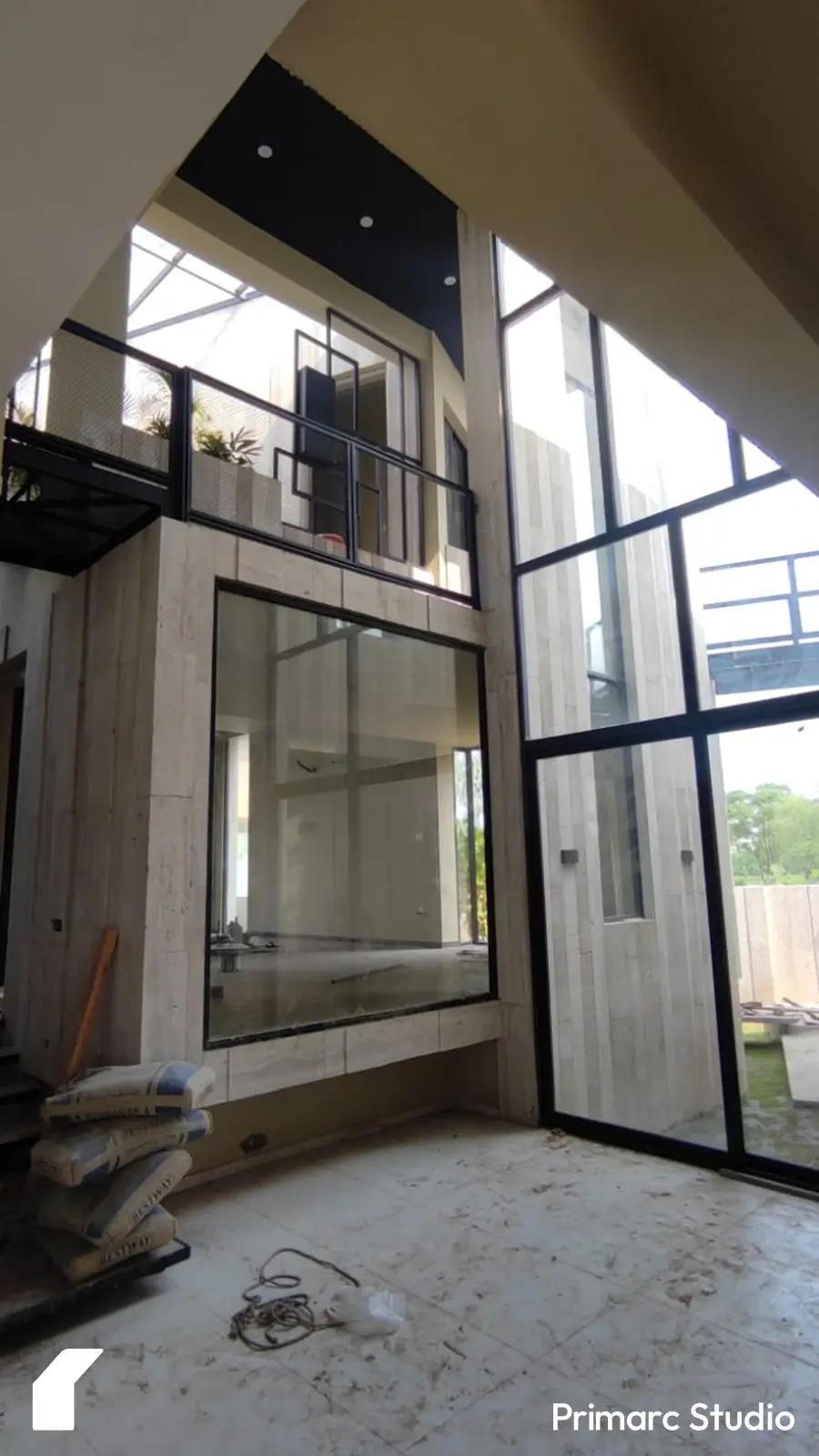
The Bottom Line: Contemporary Houses Are Dynamic And Change With The Latest Trends
Contemporary design is different from other architectural styles. It does not follow strict rules. Instead, it changes and adapts all the time. This design style includes new materials, technologies, and ideas that reflect our current world.
Contemporary homes often use sustainable building practices and smart home technology. They also feature innovative materials like bamboo flooring and vinyl siding. This combination helps contemporary homes stay trendy and stylish for many years. It shows that a contemporary home is a timeless investment.
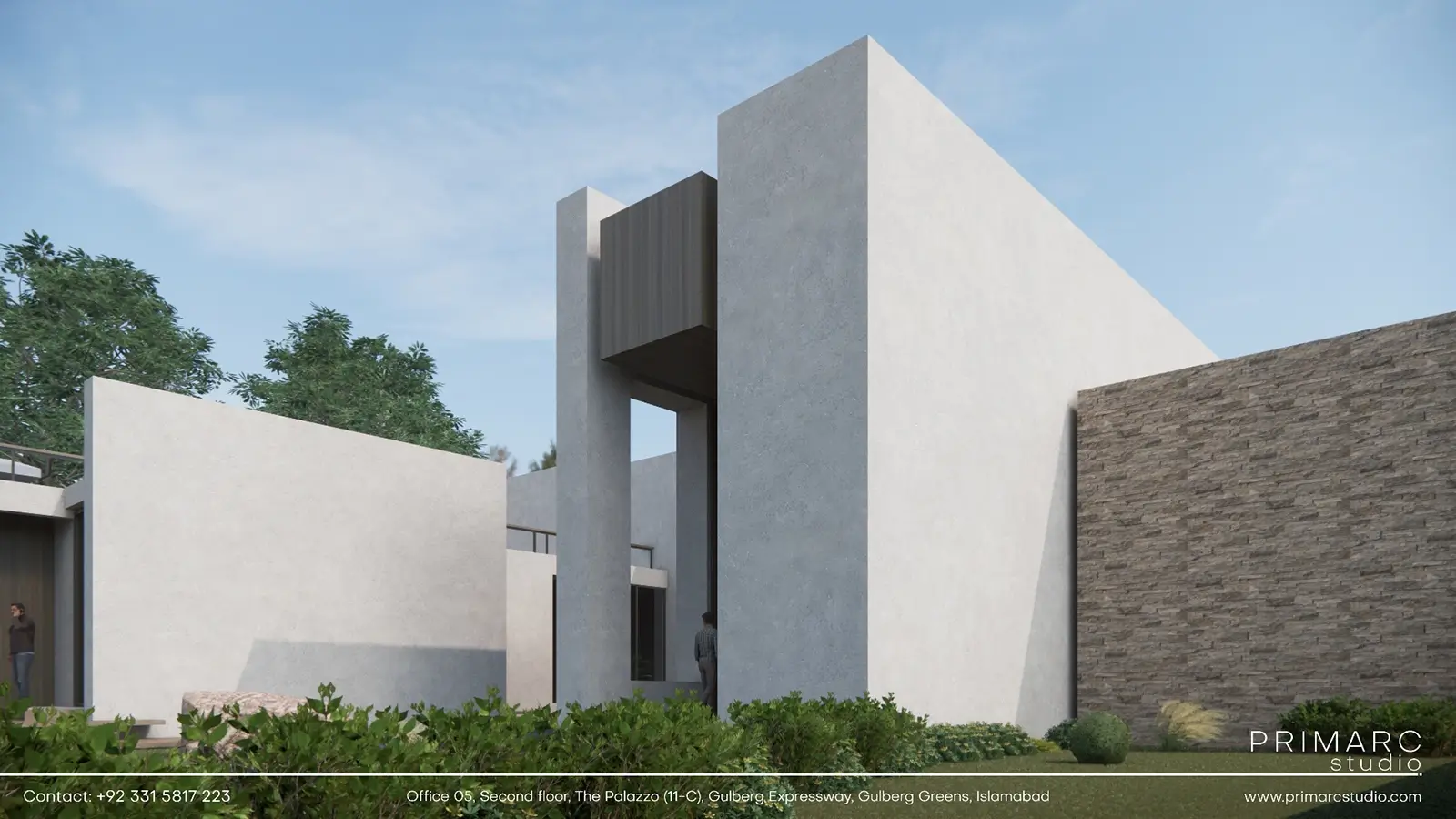
Frequently Asked Questions
What is a house contemporary-style?
A contemporary house plan is known for its clean lines and geometric shapes. It focuses on connecting the inside with the outside. Features like large windows and an open floor plan are common in modern homes. Sustainable materials are also key to the design of a modern home plan based on contemporary principles.
How do contemporary homes differ from modern homes?
Modernism and contemporary design are two different terms. Modernism is a design style that was popular in the middle of the 1900s. Contemporary design is always changing. It includes aspects of minimalism and has a flexibility that shows today’s trends and new ideas.
Can contemporary design elements be incorporated into existing homes?
One big strength of modern home design is its flexibility. You can easily refresh your home by adding sleek lines, open shelves, or modern features like energy-efficient appliances. This can quickly give a room a contemporary look. Its ability to change makes it a favorite for upgrades and renovations.
How do design a contemporary house?
Our design process is a deliberate journey, beginning with you (client). It all starts with a dialogue to understand not just client or end user needs, but your rhythm of life—your lifestyle, your profession, and your aspirations. Simultaneously, we immerse ourselves in the site, letting its unique character guide our initial thoughts.
From this foundation, we move to the plan. For us, the floor plan is paramount, and we are adamant that its design directly informs the exterior. We focus on creating clean, functional spaces with an underlying order that resonates with client. The goal is to move beyond mere rooms; we craft connections between spaces and define volumes that are both functional and aesthetically proportioned.
With approval of the plan, we begin to sculpt the home’s form in three dimensions. This is where we truly apply the core principles of contemporary design. We create and compose volumes, often embracing asymmetry to build a dynamic and compelling structure, ensuring each element complements the whole.
The final layer is materiality, which is always a deep discussion. Comfort with certain materials is key. The more honest and open this conversation is with the client or end user, the more creative risks we can take to achieve something truly special. Our approach is often to select one bold, primary material to define the home’s character, then introduce a secondary one to provide balance and complement it—a direct application of design principles to create a cohesive and powerful statement.
Primarc Studio Architects
The Primarc Studio editorial team consists of architects and designers specializing in modern residential projects, interior designs and commercial designs across Pakistan. Together, we share insights on design trends, construction costs, and project case studies.


